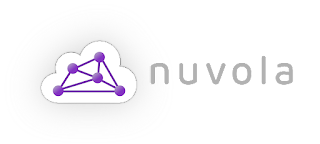nuvola (with the lowercase n) is a tool to dump and perform automatic and manual security analysis on AWS environments configurations and services using predefined, extensible and custom rules created using a simple Yaml syntax.
The general idea behind this project is to create an abstracted digital twin of a cloud platform. For a more concrete example: nuvola reflects the BloodHound traits used for Active Directory analysis but on cloud environments (at the moment only AWS).
The usage of a graph database also increases the possibility of finding different and innovative attack paths and can be used as an offline, centralised and lightweight digital twin.
Quick Start
Requirements
docker-composeinstalled- an AWS account configured to be used with
awscliwith full access to the cloud resources, better if in ReadOnly mode (the policyarn:aws:iam::aws:policy/ReadOnlyAccessis fine)
Setup
- Clone the repository
git clone --depth=1 https://github.com/primait/nuvola.git; cd nuvola- Create and edit, if required, the
.envfile to set your DB username/password/URL
- Start the Neo4j docker instance
- Build the tool
Usage
- Firstly you need to dump all the supported AWS services configurations and load the data into the Neo4j database:
./nuvola dump -profile default_RO -outputdir ~/DumpDumpFolder -format zip- To import a previously executed dump operation into the Neo4j database:
./nuvola assess -import ~/DumpDumpFolder/nuvola-default_RO_20220901.zip- To only perform static assessments on the data loaded into the Neo4j database using the predefined ruleset:
- Or use Neo4j Browser to manually explore the digital twin.
About nuvola
To get started with nuvola and its database schema, check out the nuvola Wiki.
No data is sent or shared with Prima Assicurazioni.
How to contribute
- reporting bugs and issues
- reporting new improvements
- reviewing issues and pull requests
- fixing bugs and issues
- creating new rules
- improving the overall quality
Presentations
License
nuvola uses graph theory to reveal possible attack paths and security misconfigurations on cloud environments.
This program is free software: you can redistribute it and/or modify it under the terms of the GNU General Public License as published by the Free Software Foundation, either version 3 of the License, or (at your option) any later version.
This program is distributed in the hope that it will be useful, but WITHOUT ANY WARRANTY; without even the implied warranty of MERCHANTABILITY or FITNESS FOR A PARTICULAR PURPOSE. See the GNU General Public License for more details.
You should have received a copy of the GNU General Public License along with this repository and program. If not, see http://www.gnu.org/licenses/.



